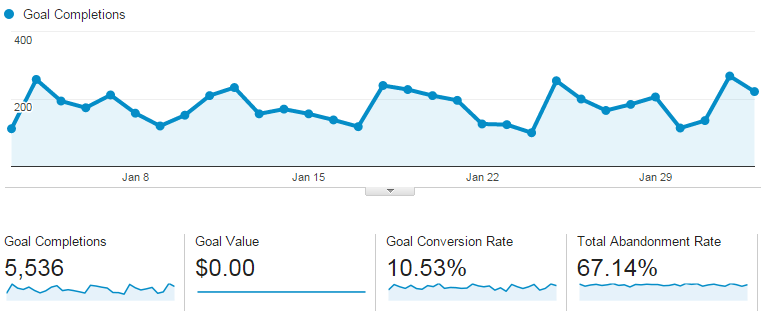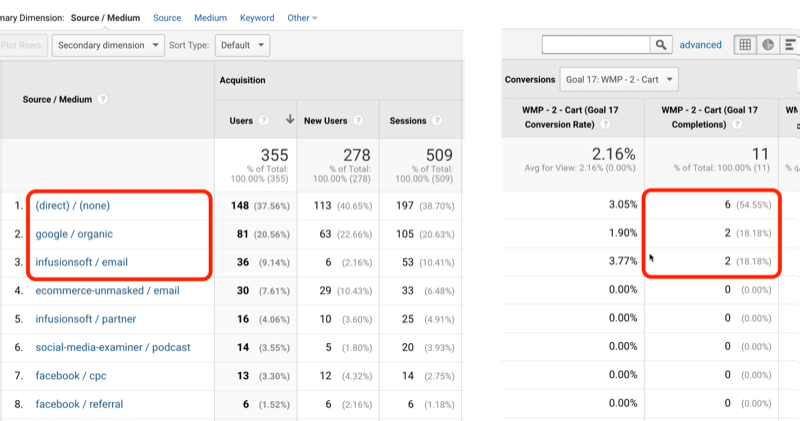What Data Is Google Analytics Goals Unable to Track: Find Out the Limitations
What Data Is Google Analytics Goals Unable to Track: Find Out the Limitations
Blog Article
Demystifying Google Analytics Limitations: Uncover What Information Goals Can not Track
In the realm of digital analytics, Google Analytics stands as a powerful device that gives useful insights into website performance and user habits. Amidst its capabilities, there exist restrictions that often go unnoticed. Comprehending what Google Analytics can not track is crucial for a comprehensive understanding of data analysis and decision-making processes. From the details of user communication with vibrant web content to the complexities of cross-device individual journeys, these constraints dropped light on areas that may stay covered from typical analytics perspectives. By unraveling these constraints, a clearer photo arises, enabling more informed methods and refined insights into user interaction and conversions.

User Interaction With Dynamic Web Content
User communication with vibrant web content plays an important duty in recognizing user habits on websites and maximizing the general user experience. By tracking customer interactions with vibrant material, site proprietors can obtain important insights into user interaction, preferences, and habits - what data is google analytics goals unable to track.
Google Analytics provides numerous devices to track customer communications with vibrant material, such as occasion tracking and virtual pageviews. Event monitoring permits you to keep track of details user activities, like clicking a button or watching a video clip, offering information on just how individuals engage with dynamic elements. Digital pageviews can be made use of to track communications that do not bring about a new page load, supplying a thorough view of customer involvement with dynamic material. By analyzing this data, web site owners can make educated decisions to boost user experience and drive conversions.
Cross-Device User Journeys
How can modern analytics devices track the facility paths users take across numerous tools in their on-line trips? Cross-device customer trips provide a substantial challenge for monitoring and assessing user actions properly. As customers communicate with applications or web sites utilizing various tools such as mobile phones, tablet computers, and desktop computers, it ends up being crucial to understand how they move between these systems to maximize customer experience effectively.
Google Analytics encounters restrictions in tracking cross-device customer journeys because of privacy worries and technological restrictions - what data is google analytics goals unable to track. While it can give understandings into individual tools' communications, tracking a seamless user journey throughout multiple devices remains a difficulty. This restriction can cause incomplete information and fragmented customer insights, making it challenging for businesses to create a unified view of the client trip
To address this issue, organizations can make use of sophisticated analytics devices that provide cross-device monitoring capabilities, allowing them to obtain an extra alternative understanding of customer actions. By leveraging these tools, organizations can bridge the space in tracking cross-device customer trips and enhance their digital techniques for a smooth user experience.
Offline Conversions and Attribution
As organizations navigate the obstacles of tracking cross-device customer journeys, an additional critical element to think about is the realm of offline conversions and attribution in the realm of data analytics. While Google Analytics gives valuable understandings right into on the internet individual actions, it falls short when it involves tracking conversions that happen offline. This constraint postures a considerable challenge for services that have both online and offline sales networks.
Offline conversions, such as acquisitions made in physical stores or via phone call facilities, are necessary to understanding the complete customer journey. Without the click here for more capacity to attribute these offline conversions to details on the internet interactions, organizations may have a hard time to accurately determine the influence of their digital marketing efforts.
To address this space, businesses can explore different services such as integrating CRM systems with on the internet analytics tools or making use of unique coupon codes that can be mapped back to online projects. By bridging the gap in between online and offline information, services can gain a much more thorough understanding of their consumers' behavior and improve their general marketing strategies.
Person Individual Identification
In the realm of data analytics, the capability to accurately determine private users across different on the internet touchpoints is an essential challenge for organizations seeking to individualize and optimize their marketing approaches. While Google Analytics supplies beneficial insights into user habits and interactions, it drops short in enabling the recognition of particular individuals as a result of personal privacy concerns and technological restrictions. Google Analytics makes use of one-of-a-kind identifiers such as cookies to track user sessions and actions, yet these do not correspond to determining individual users in an individual feeling.

Data From Secure Pages
Despite the raising prevalence of protected pages on websites, obtaining information from these encrypted resources presents a special obstacle for electronic analytics platforms like Google Analytics. Protect web pages, suggested by HTTPS in the link, secure data traded between the customer's view it now web browser and the internet site's web server to make sure personal privacy and safety. While this security is vital for protecting sensitive information, it additionally presents limitations for tracking user actions and celebration analytics information.
Google Analytics encounters obstacles in accumulating thorough details from secure web pages as a result of the security procedures in location. Therefore, particular data factors such as recommendation resources, keyword searches, and also some customer communications might not be completely caught when customers access an internet site through a safe and secure connection. This limitation can affect the accuracy and efficiency of the data evaluation, leading to voids in understanding user actions and choices on safe web pages.
To navigate this challenge, electronic analysts might require to check out alternate monitoring methods or take advantage of other devices specifically designed to collect insights from safe and secure pages. By adjusting methods to fit these constraints, businesses can still derive important analytics regardless of the restrictions presented by encrypted links.
Conclusion
Finally, Google Analytics has restrictions in tracking user communication with dynamic content, cross-device customer trips, offline conversions, specific user identification, and data from safe and secure pages. These restrictions impede a comprehensive understanding of individual habits and may cause voids in information analysis. Despite its valuable insights, Google Analytics may not give a full image of customer involvement throughout numerous touchpoints. It is check this site out crucial for services to be knowledgeable about these constraints and consider additional devices for a more alternative sight of their data.
Customer interaction with vibrant material plays a critical duty in comprehending customer actions on web sites and enhancing the overall individual experience. By tracking customer interactions with vibrant web content, web site owners can gain useful understandings into user interaction, preferences, and habits.
Google Analytics utilizes special identifiers such as cookies to track user sessions and actions, but these do not equate to determining individual customers in an individual sense.
As an outcome, certain information factors such as reference resources, keyword searches, and even some customer communications might not be totally caught when users access a web site through a protected connection.In conclusion, Google Analytics has constraints in tracking customer interaction with dynamic web content, cross-device user trips, offline conversions, individual customer identification, and information from safe pages.
Report this page